The power of creative storytelling: How Ember uses art & design to boost visibility of grassroots mental health initiatives
Jan 25, 2024
Every mental health initiative has a unique story to tell. Whether it’s a vast support network that started in a Facebook group or a new therapy technique delivered in a travelling caravan, the community-based mental health initiatives (innovators), we work with at Ember have distinctive stories that deserve recognition.
This blog takes you through the collaborative creative process of Ember's in-house design team with partner innovators, and the variety of storytelling and communication tools they have co-created to creatively spotlight the innovation in mental health at the grassroots. Read on!
Why is boosting visibility of community-based mental health initiatives important?
The work of innovators tends to be quite invisible beyond the communities they work in. As innovators understandably spend most of their time caring for the communities through their programmes on the ground, communications and storytelling work tends not to be a priority. In addition, the prospect of creating a brand or telling their story to a wider public outside their local community appears daunting. Thus, they often struggle to articulate their own model, approach and story in a way that highlights their uniqueness.
Part of the support Ember offers its innovators is ensuring that they are telling their stories to a wide audience to get the visibility they deserve. Since every initiative is unique, the way we present these stories is equally unique.
Creativity has a central place in all our work at Ember. Art and design are powerful tools that help people express their stories and enable others to connect with them.
What's more, taking care and attention to the way an initiative's story is captured and presented is a way of showing how those perspectives are important and making an impact in the global mental health sphere.
From creating bespoke illustrations to building websites and crafting entirely new brands, we are passionate about making sure that innovators' stories are communicated to the world in ways that best capture their transformative work on the ground.
Ember design team
We are lucky at Ember to have an in-house team of talented designers- Josh Olins leads our design team, supported by Jara Lindsay, and Ranwa Alkateb. They enable the innovators to visually tell their story in diverse formats to funders and stakeholders in the global mental health sphere.
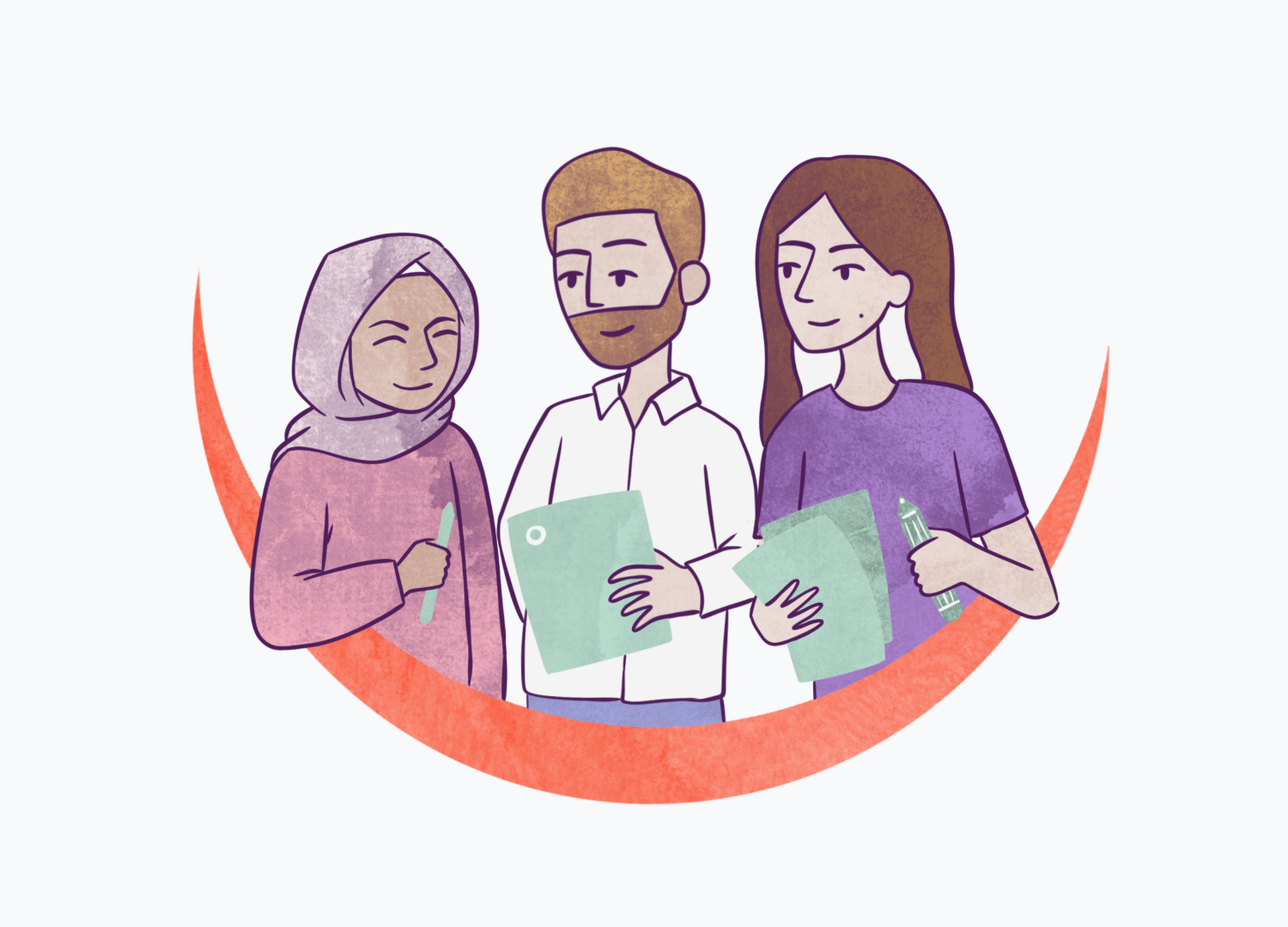
The power of illustration: How each innovator gets an icon
If you’ve visited our website before, you may have noticed that every innovator has its own ‘Ember style’ illustration. Why is this? We first started creating these illustrations as a way of having a visual representation for innovators who did not have their own logos.
Illustrations are not just a practical shorthand; they show that we have joined hands together as organisations- they symbolise partnership.
Working with innovators to design their illustration is a fruitful exercise, as we often get to the core of what really matters to their team.
Centering the Superheroes of Positive Konnections
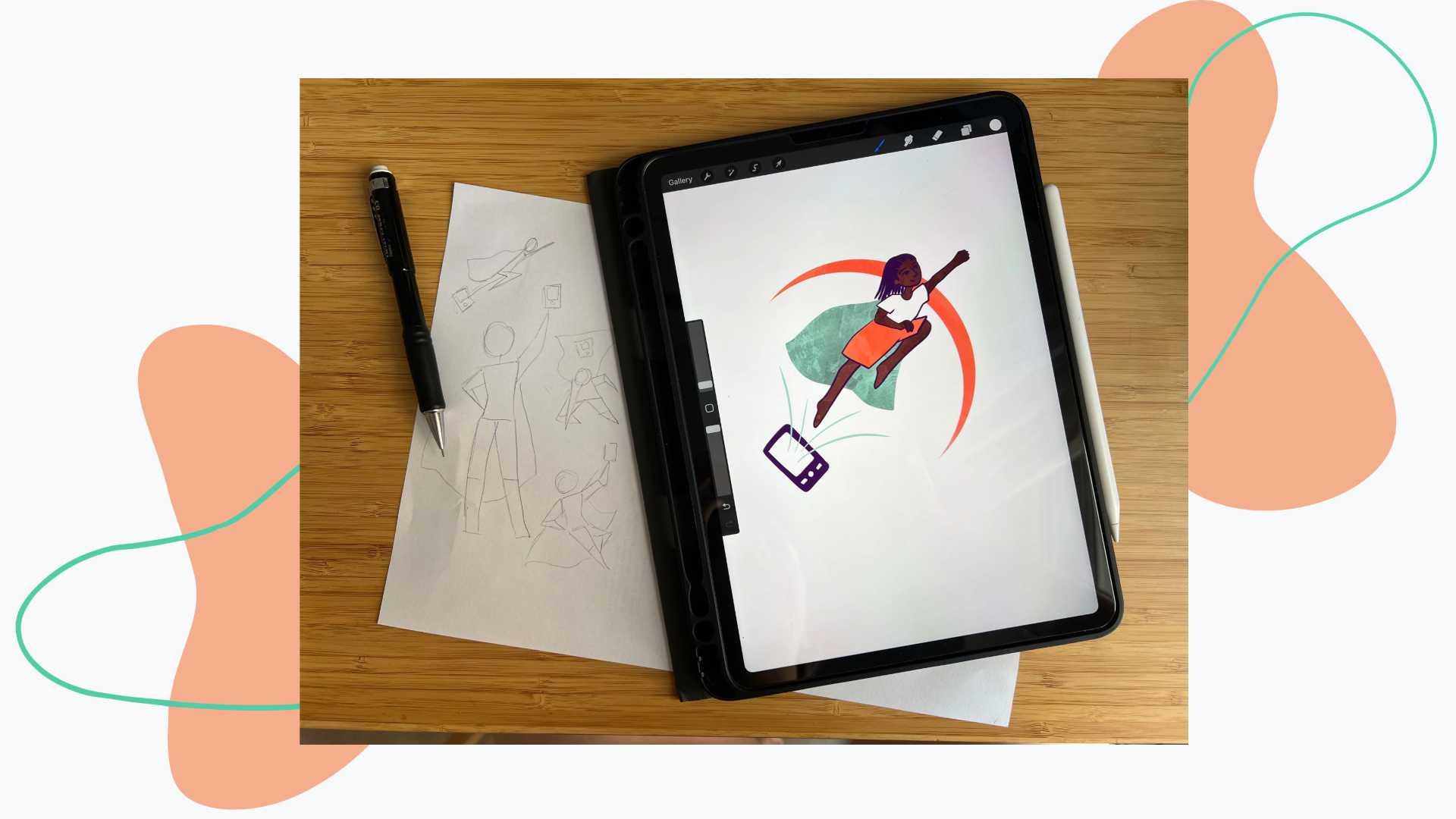
For Zimbabwe-based Positive Konnections, a tech-enabled support programme for young people living with HIV, it emerged from our sessions together that they often use the superhero metaphor when working with children and young people to reframe struggles so participants can think of themselves in new ways. The photo above shows Jara's initial sketches for the illustration that eventually turned into a fully-fledged design.
HRHI teaches us place matters

For Hope Restoration and Health Initiative (HRHI), based in Nigeria, the most important aspect of their organisation was the space where their services are based. They are a residential centre that provides shelter, mental health support and life skills to individuals recovering from severe mental conditions, partnering with family members to facilitate their reintegration into communities. For the HRHI team, this home was the heart of their initiative. The final design represents this casual, homely and comforting aspect of their work.
Empowering innovators to tell their stories through branding
As with all our work at Ember, the brand development process starts with learning as much as we can about innovators.
Each innovator works in a unique local setting, and so it’s critical that we understand their team and their environment so that we can know the places where our designs are going to live.
Our design team takes time to get to know innovators by asking them tailored questions. You’d be surprised how much fruitful conversation can come out of a simple question like, ‘What animal represents your personality?’
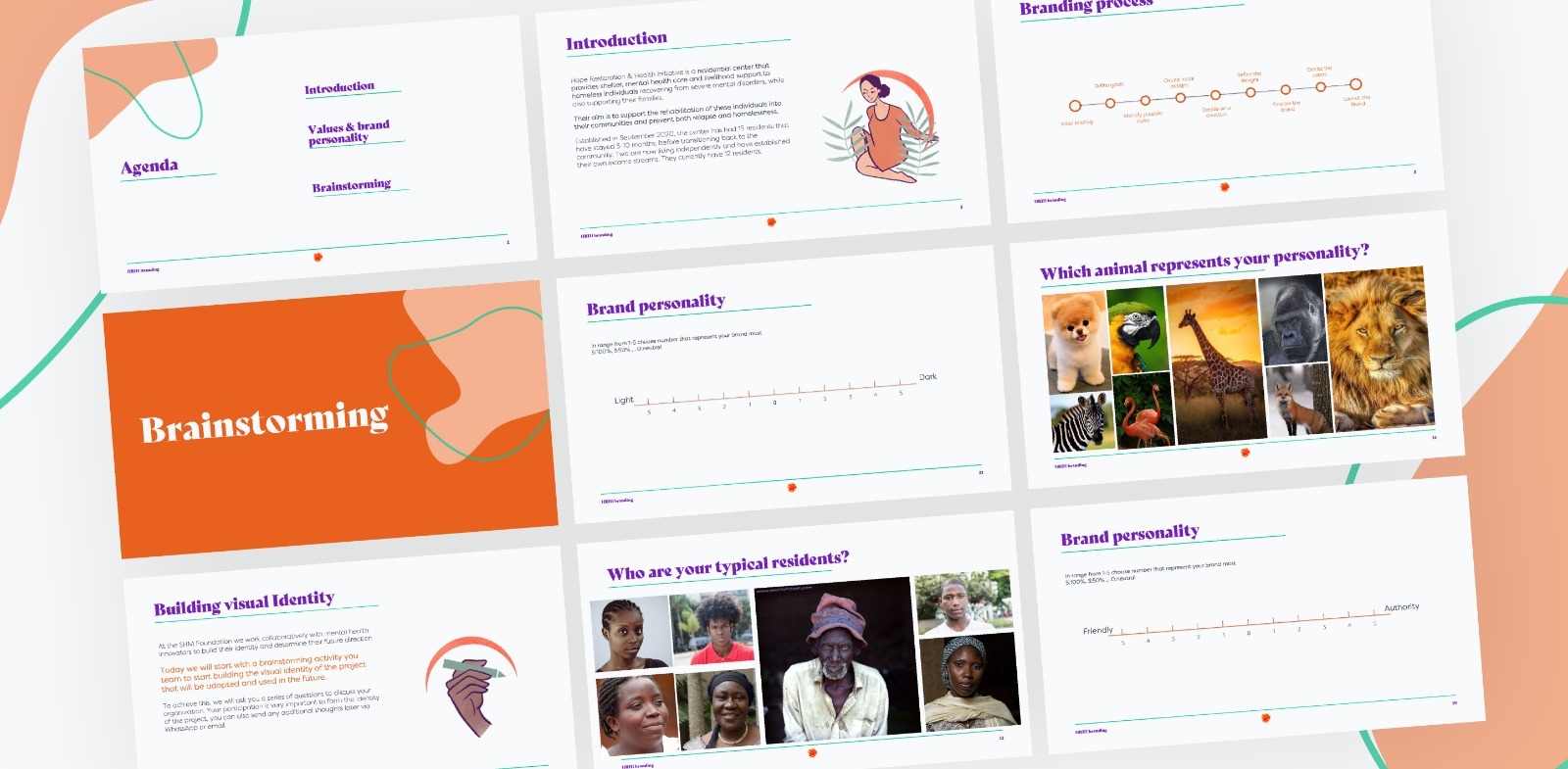
The design team then begin to learn about art movements and design styles that are popular in the local area, and the history behind these styles- cultural context is integral to our approach to design. They also look at initiatives that run similar projects, and how this particular initiative fits into the ‘market’, identifying what makes this innovator unique and how this can be emphasised through art and design.

From there, it’s time to brainstorm- the colours, fonts, images, styles and logos that match the feelings and atmosphere of how the innovators described their work us. They make several mock-ups of logos that tell the innovator’s story in different ways.
A logo needs to tell a story and convey the messages that the innovators have told us.
Once they have worked as a team to narrow ideas down, the design team then pitch those back to the innovator. This is a really important conversation, where we see what resonates with the team. After together finalising a logo concept, we build out the wider brand: typography, colour schemes, and more. We also ascertain what other materials we can support the initiative with – whether that’s business cards, websites, letterheads, social media templates or web pages – creating a full pack of assets that equip innovators with the tools to help them share their work as impactfully as possible.
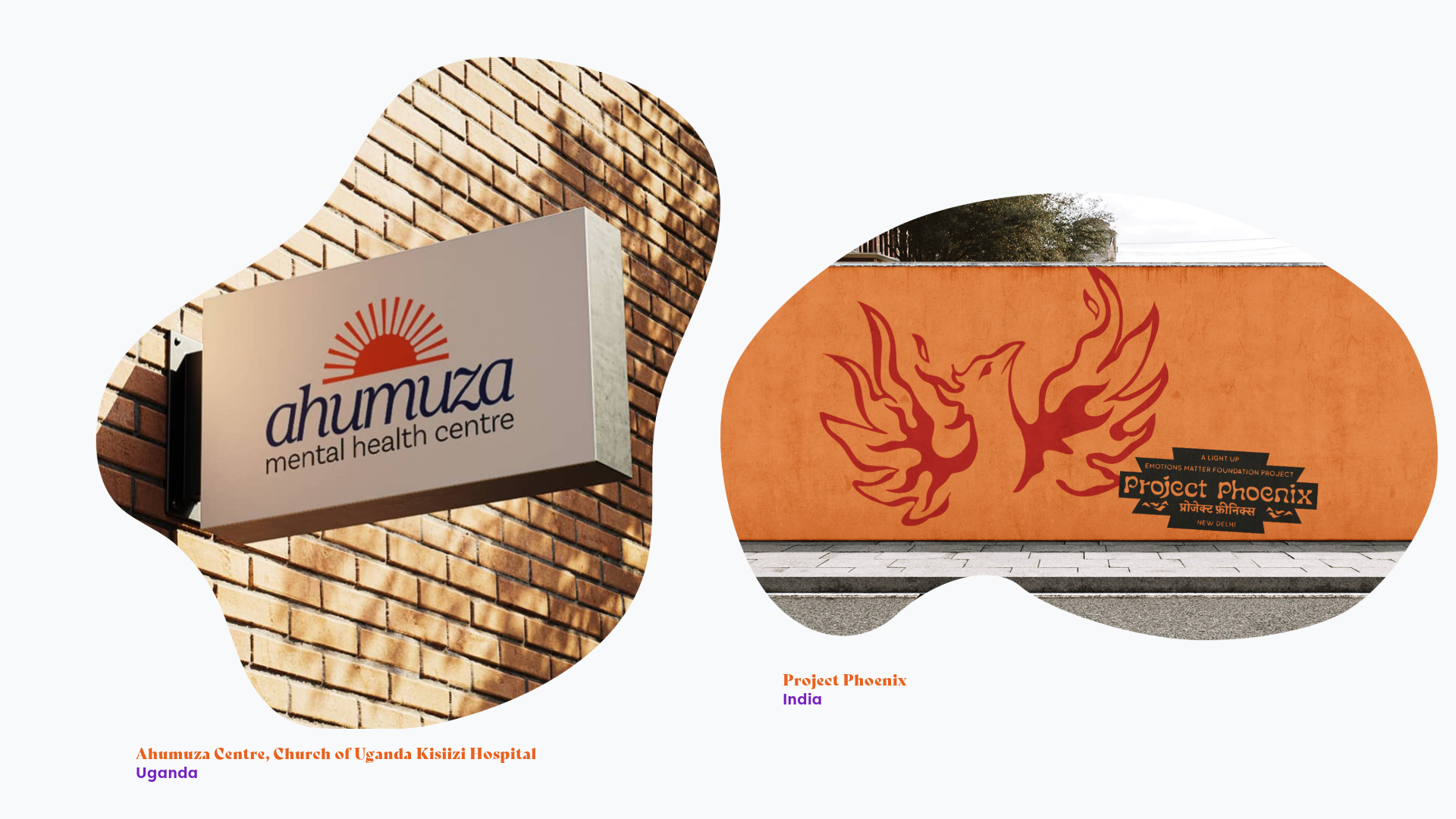
Building websites to boost visibility
Whether an innovator is looking for local people to join their team of volunteers, signposting their services to their community, sharing resources with the global mental health sphere, or seeking funds from international donors, creating a website is often a crucial step for grassroots organisations to become visible to the people they need to reach most.
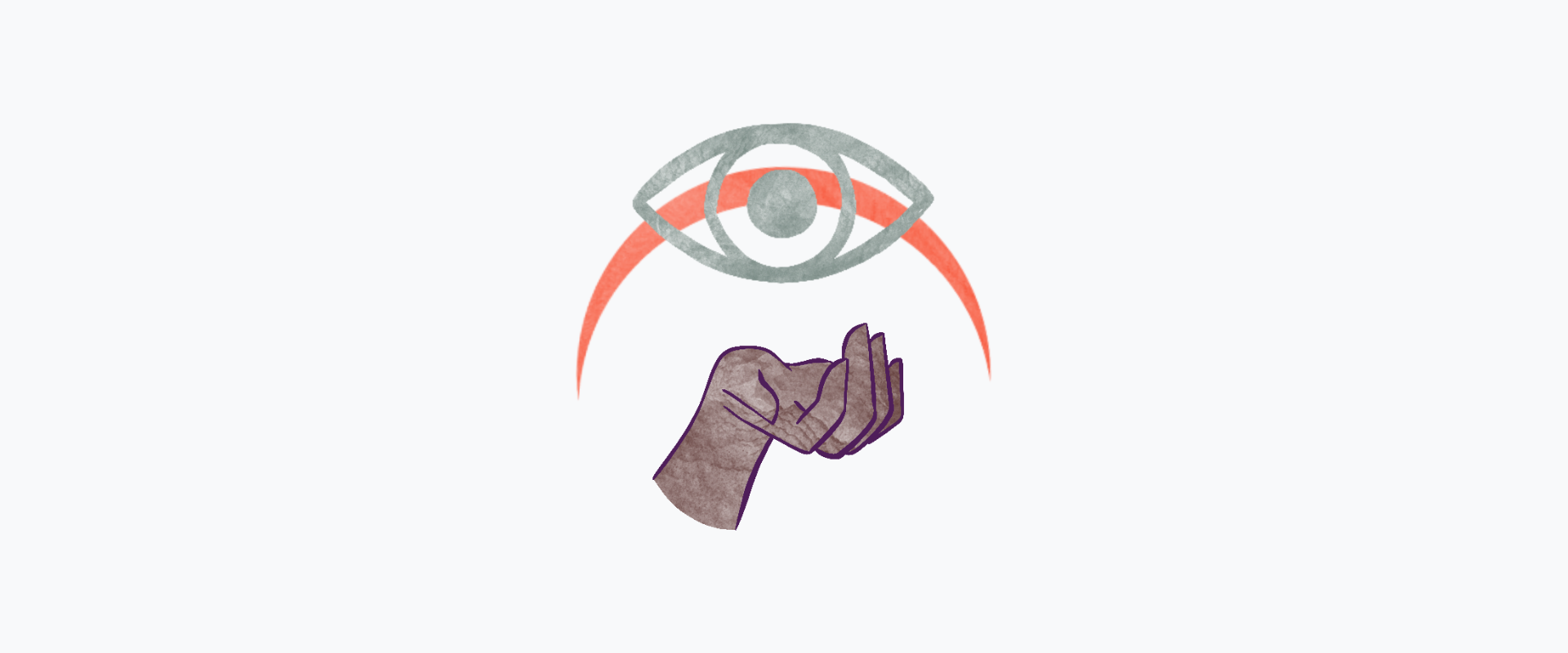
Because our innovators have such diverse needs, their web pages are custom made – through a collaborative co-creation process between the design team and the innovators, and this takes time, effort and expertise. They use their expert skills in web design to help drive an initiative's target audience towards their goals, telling a story along the way. They also build a user guide, so that innovators can continue updating the website and adapt it as they grow, well beyond the timeframe of our partnership.
Balancing Diverse Audiences with Girls for Girls
Girls for Girls (G4G) are a survivor-led NGO, providing mental health, educational and legal support to people affected by sexual and gender-based violence. (Click here to watch a short film about their incredible work!)
G4G had three very different reasons for wanting a website. First, they wanted to become known in their community, showing women and girls in their local area that there are safe, contactable and reliable spaces nearby. Second, they were looking to grow their organisation, and wanted to communicate to the wider global mental health community that their model is unique. Third, they wanted a platform on which to launch their shop, selling books and merchandise to support their fundraising.
This meant their web design had to strike a balance: signalling approachability to a small community, showcasing an impressive range of achievements to a global audience, and appealing to consumers.
To accommodate for this, we created a visual language that was down-to-earth and welcoming, dedicated a page to their impressive impact data, and made sure the website clearly signposted their online shopfront.
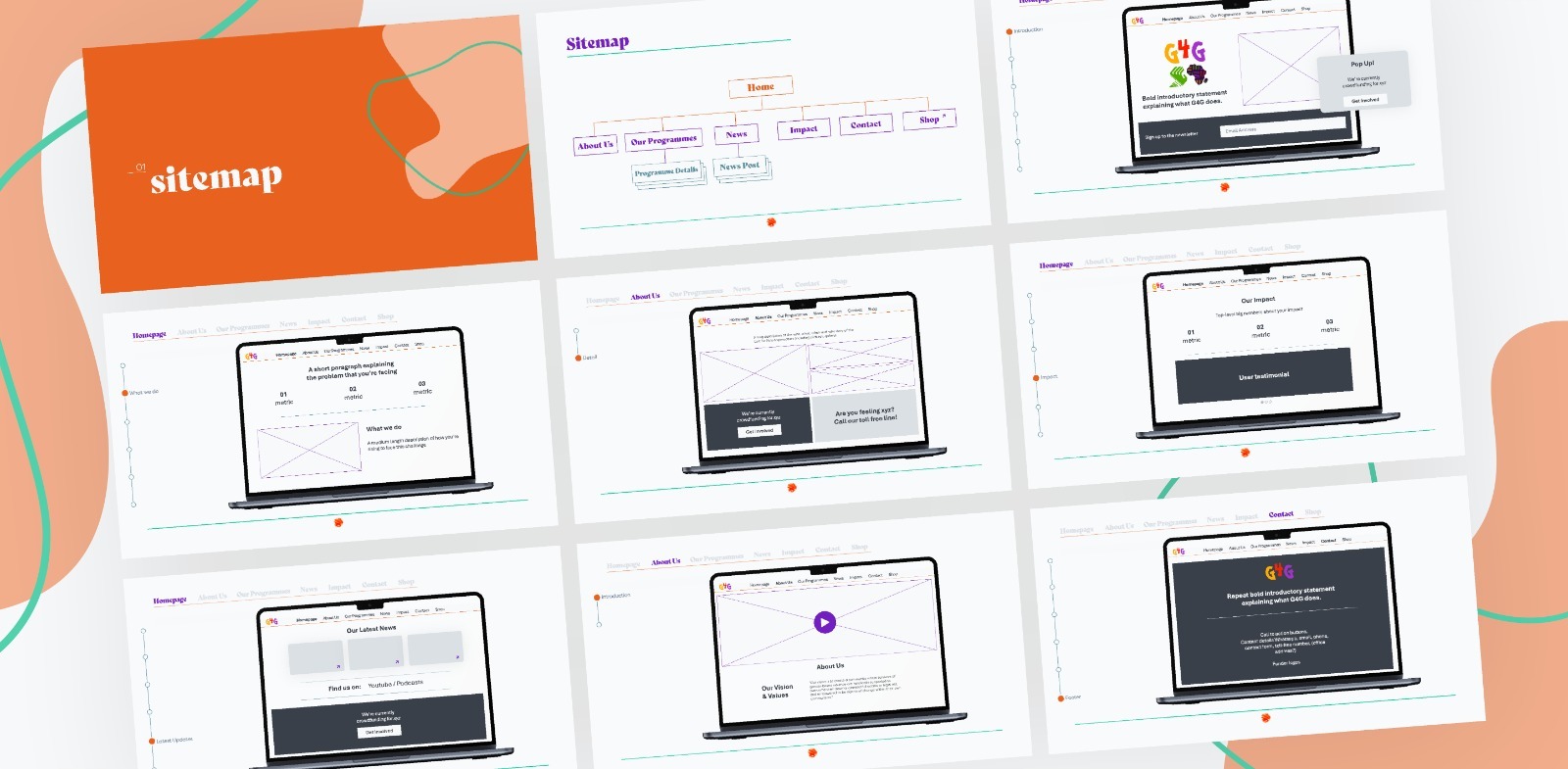
Keeping it Simple for ACUFA Users
ACUFA is an association based in Argentina that runs an integrated support program for people living with mental health challenges and their families, including peer support groups and income-generating activities. (Learn more by reading about our trip to visit them in 2022!)
Like most initiatives, ACUFA wanted a website to showcase their work to a wide audience. But they also had a very specific need: to simplify access to support services for their community.
They found that many people living with mental health challenges had a very difficult time accessing support services for their condition, such as disability benefits or mental health care, from government bodies. Legalistic language, often used in application forms, can be hard to understand. All of this can be demoralising, especially for those who are already struggling. ACUFA wanted to solve this problem by creating step-by-step guides that were easy to follow and readily accessible on their website.
To do this, our team helped create an accessible Q&A page, in Spanish, that compiled the vast range of resources and links into a user-friendly page.
A Journey of Skill Building for Positive Konnections
Creating the website for Positive Konnections (PK) was a journey that began with a deep dive into their vision, values, and goals. The Ember design team kicked off the process with an in-depth discussion with the PK team to understand their needs and the purpose behind their online presence.
A key aspect of this collaboration was the mentorship provided by the Ember team to PK’s website designer. By sharing expertise and building skills, Ember supported the designer in navigating the complexities of web development, empowering PK to create a platform that reflects their mission.
With a clear understanding of PK’s objectives, we moved on to discussing the essential components of a good website. Together, we explored the structure of the site, brainstorming what information should be included on various pages and what a visually appealing and user-friendly website looks like.
Next, we transitioned from ideas to tangible plans by creating wireframes. These black-and-white layouts outlined the structure of each web page, providing a clear visual representation of the site’s framework.
With the wireframes as our guide, PK’s developer set up the layout pages and integrated the necessary pictures. This phase was all about bringing the blueprint to life, transforming static designs into a dynamic, interactive website. Their website is now live and features pictures from award-winning photographer Elizabeth Dalziel (see this online exhibition featuring PK’s work).
Capturing the Quirks of Huertomanías with a Game
Creating the Huertomanias website was a two-year journey filled with collaboration, creativity, and teamwork. The process began with Ember designing the logo and branding, setting the visual tone for the project. The Huertomanias team played a pivotal role, constantly researching and sharing fresh ideas that enriched the project. Their creative inputs ensured the website truly reflected their vision and passion. The result: a user-friendly, human-centered website that captures the spirit of Huertomanias and speaks to their values and ethos. The site also features an interactive trivia game with a surprise prize at the end.
What can others learn?
Over the past five years at Ember, we have learned that when it comes to supporting community-based initiatives, art and design are not just a nice-to-have. In fact, it's often what can catalyse an organisation to grow because:
- Creative storytelling provides an easy-to-understand and accessible way to communicate the local on-ground expertise of grassroots initiatives, cutting across language barriers to share it with a global audience.
- Having a portfolio of visual assets enables grassroots initiatives to tell their story better. It lends credibility to their work which bolsters their confidence and unlocks new avenues of opportunities for recognition.
- This process also deepens Ember's understanding of innovators' work and feeds into strengthening other aspects of their work, ranging from their vision, pitch, fundraising, strategy clarity, among others.
Being able to communicate one's story and impact creatively is so important, but many initiatives do not have the resources to work on this on top of implementing their critical interventions. As funders and mentors, we believe that providing this support is vital to our mission to nurture a diverse ecosystem of care around the world by supporting those who innovate mental health care at the grassroots.